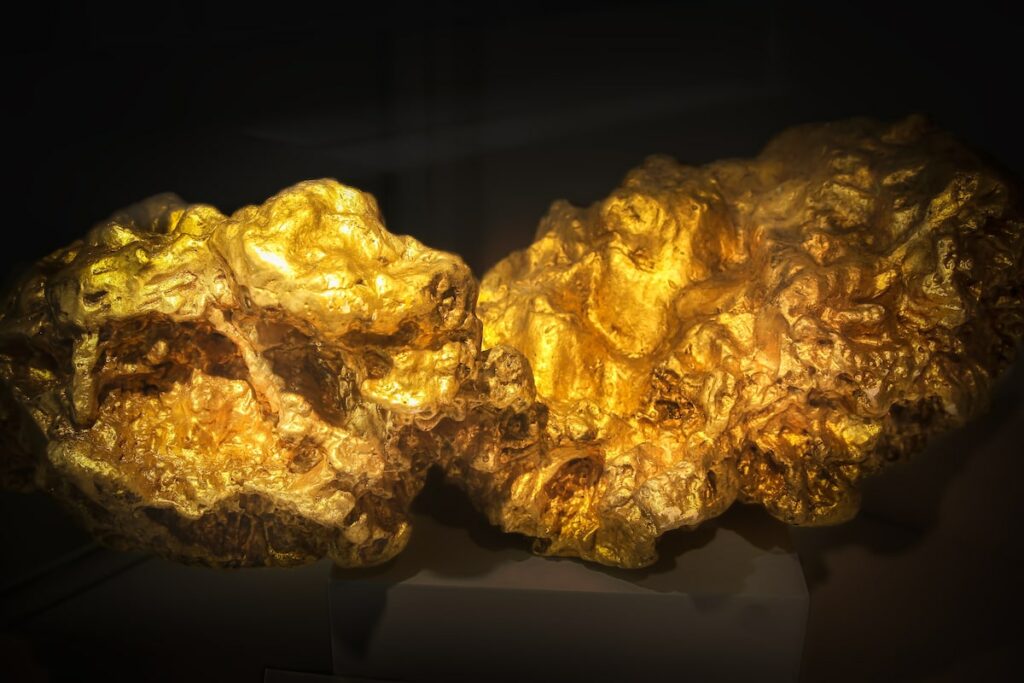Navigating the intricate tapestry of asset ownership can be a perplexing endeavor, particularly when that asset has a centuries-long history of shaping economies and determining the wealth of nations.
One such asset, a gleaming testament to the enduring value and material allure, brings a unique blend of intrigue, curiosity, and complexity.
It’s completely legal for U.S. citizens to own gold bullion. However, restrictions were in place from 1933 to 1974 due to the Gold Reserve Act of 1934, which has since been lifted.
As we delve into the finer details of this compelling subject, let us venture into ownership rights, legality, and the United States.
It Was Illegal to Own Gold in the 1930s (Executive Order 6102)
In an attempt to combat the Great Depression, U.S. President Franklin D. Roosevelt issued Executive Order 6102 on April 5, 1933.
This far-reaching order prohibited “the hoarding of gold coin, gold bullion, and gold certificates within the continental United States,” effectively making it illegal for a private citizen to own gold.
The measure was taken to prevent individuals from hoarding gold, which would further destabilize the economy during a financial crisis.
Citizens were required to exchange their gold for U.S. dollars at a set price.
The severity of the Great Depression instigated a climate of fear and mistrust, leading many to convert their savings into gold or gold certificates.
This panicked conversion created a massive outflow of gold from the Federal Reserve, threatening the stability of the U.S. monetary system.
The Roosevelt administration believed outlawing gold ownership and compelling citizens to return their gold to the government could stabilize the economy and restore confidence in the dollar.
The ban on private gold bullion ownership lasted more than four decades.
However, in 1974, President Gerald Ford signed a bill to legalize the private ownership of gold bullion.
Ford’s decision reflected the belief that citizens could be trusted to make responsible decisions about gold ownership without destabilizing the economy.
Despite the long period of prohibition, the allure of gold never faded, and its ownership is now seen as a common strategy for diversifying investment portfolios and hedging against inflation.
Gold is Legal to Own in the USA Since 1974
In a dramatic shift from the previous era, it’s legal for U.S. citizens to own gold today.
This policy change occurred in 1974 when President Gerald Ford signed a bill into law reversing President Roosevelt’s Executive Order 6102, which had made the private ownership of gold illegal for more than four decades.
The transition ushered in a new age for investors and gold enthusiasts alike.
People were again allowed to own, buy, and sell gold without restriction, opening the floodgates for private investment.
As a result, gold bullion coins and bars became increasingly popular as an investment asset due to their intrinsic value and the security they provide against economic instability.
Today, gold is viewed as a safe-haven asset used in various industrial applications and jewelry.
Moreover, the U.S. Mint produces gold coins for collectors and investors.
These legal changes have allowed gold to reclaim its position as a coveted and respected asset, available to all who wish to hold a piece of this enduring symbol of wealth.
However, this may not last forever.
Gold Could Be Confiscated Again
The possibility of the U.S. government again confiscating gold, as it did in the 1930s, is a topic that regularly surfaces among gold bugs and financial experts.
While no legislation currently hints at such a move, the historical precedent of Executive Order 6102 has left a lasting impression, generating a degree of apprehension.
In times of severe economic distress or national emergency, it’s theoretically possible that governments could resort to extraordinary measures, such as the seizure of privately held gold, to stabilize their economies.
However, such actions would be met with immense legal and political challenges today, given the changed global financial landscape and a more pronounced focus on individual rights and freedoms compared to the early 20th century.
Despite these considerations, the question persists due to the enduring memory of the 1933 gold confiscation.
It serves as a reminder to investors about the potential risks of holding physical assets during economic uncertainty, making diversification a crucial aspect of any robust investment strategy.
Nevertheless, the confiscation of gold remains a remote possibility, largely confined to hypothetical discussions rather than a looming reality in the current U.S. financial environment.
Pros and Cons of Owning Physical Gold
Owning physical gold as an investment strategy carries its own set of unique advantages and disadvantages.
Pros:
- Hedge against inflation: Gold is often considered a ‘haven’ asset that retains its value during economic instability. When inflation rises, the currency’s value falls, but gold usually maintains or even increases its value.
- Diversification: Gold is a non-correlated asset class, meaning it doesn’t typically move in tandem with stock and bond markets. This makes it a useful tool for diversification, potentially helping to reduce portfolio risk.
- Tangible asset: Gold is a tangible asset you can hold in your hand, giving many owners a sense of security. Unlike digital assets or stocks, digital failures or company bankruptcy cannot erase or devalue physical gold.
- Universally accepted: Gold is recognized and valued worldwide, making it a universal currency. In a crisis where the local currency is not accepted, gold may be a viable alternative.
Cons:
- Storage and security: Physical gold must be securely stored, which can be costly and complicated. There’s also the risk of theft.
- No passive income: Gold doesn’t generate dividends or interest. The only potential gain from owning gold comes from a price increase.
- High transaction costs: Buying physical gold often involves premiums above the spot price, and selling it might require authentication or result in less than the current spot price.
- Transportation: One of the biggest downfalls of gold it how difficult it is to transport, especially beyond borders.
Considering these pros and cons, owning physical gold can be a strategic part of a diversified portfolio, but it’s important to understand its potential risks and challenges.
The same can be said for Bitcoin which solves many of the issues gold faces.




